Edirisuriya M. D. Siriwardane
Discovery of 2D materials using Transformer Network based Generative Design
Jan 14, 2023Abstract:Two-dimensional (2D) materials have wide applications in superconductors, quantum, and topological materials. However, their rational design is not well established, and currently less than 6,000 experimentally synthesized 2D materials have been reported. Recently, deep learning, data-mining, and density functional theory (DFT)-based high-throughput calculations are widely performed to discover potential new materials for diverse applications. Here we propose a generative material design pipeline, namely material transformer generator(MTG), for large-scale discovery of hypothetical 2D materials. We train two 2D materials composition generators using self-learning neural language models based on Transformers with and without transfer learning. The models are then used to generate a large number of candidate 2D compositions, which are fed to known 2D materials templates for crystal structure prediction. Next, we performed DFT computations to study their thermodynamic stability based on energy-above-hull and formation energy. We report four new DFT-verified stable 2D materials with zero e-above-hull energies, including NiCl$_4$, IrSBr, CuBr$_3$, and CoBrCl. Our work thus demonstrates the potential of our MTG generative materials design pipeline in the discovery of novel 2D materials and other functional materials.
Crystal Transformer: Self-learning neural language model for Generative and Tinkering Design of Materials
Apr 25, 2022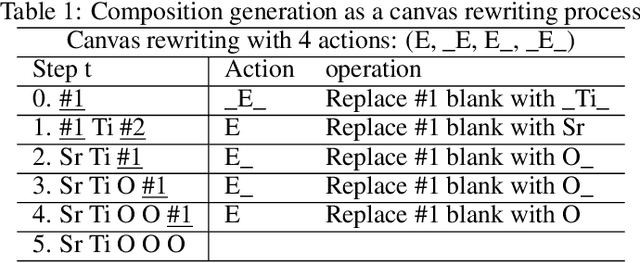
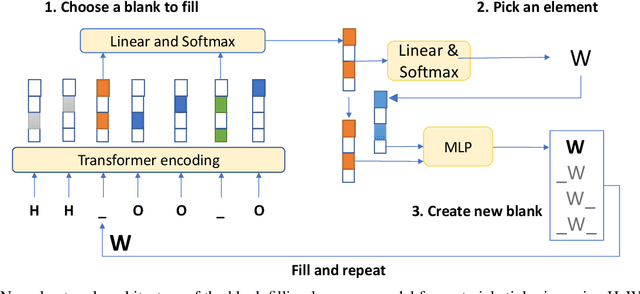
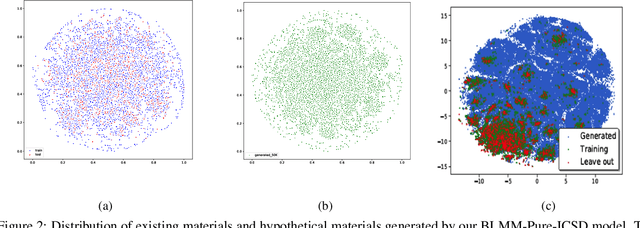
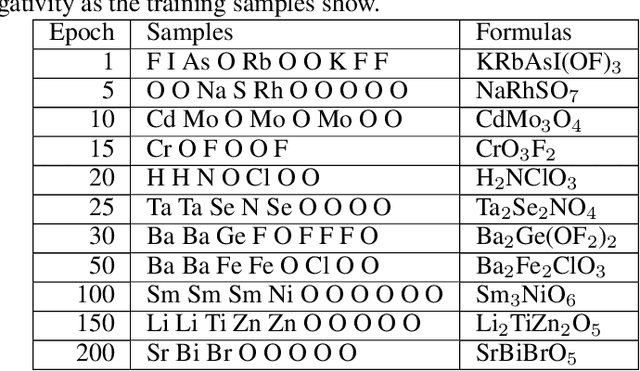
Abstract:Self-supervised neural language models have recently achieved unprecedented success, from natural language processing to learning the languages of biological sequences and organic molecules. These models have demonstrated superior performance in the generation, structure classification, and functional predictions for proteins and molecules with learned representations. However, most of the masking-based pre-trained language models are not designed for generative design, and their black-box nature makes it difficult to interpret their design logic. Here we propose BLMM Crystal Transformer, a neural network based probabilistic generative model for generative and tinkering design of inorganic materials. Our model is built on the blank filling language model for text generation and has demonstrated unique advantages in learning the "materials grammars" together with high-quality generation, interpretability, and data efficiency. It can generate chemically valid materials compositions with as high as 89.7\% charge neutrality and 84.8\% balanced electronegativity, which are more than 4 and 8 times higher compared to a pseudo random sampling baseline. The probabilistic generation process of BLMM allows it to recommend tinkering operations based on learned materials chemistry and makes it useful for materials doping. Combined with the TCSP crysal structure prediction algorithm, We have applied our model to discover a set of new materials as validated using DFT calculations. Our work thus brings the unsupervised transformer language models based generative artificial intelligence to inorganic materials. A user-friendly web app has been developed for computational materials doping and can be accessed freely at \url{www.materialsatlas.org/blmtinker}.
MaterialsAtlas.org: A Materials Informatics Web App Platform for Materials Discovery and Survey of State-of-the-Art
Sep 09, 2021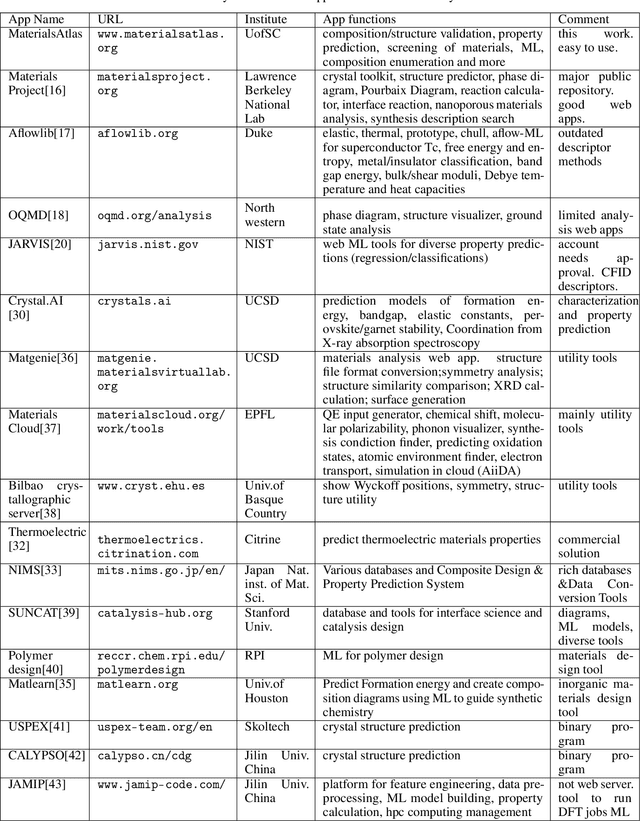
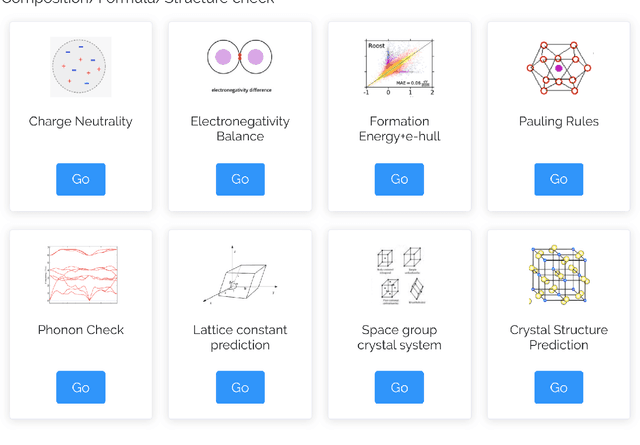
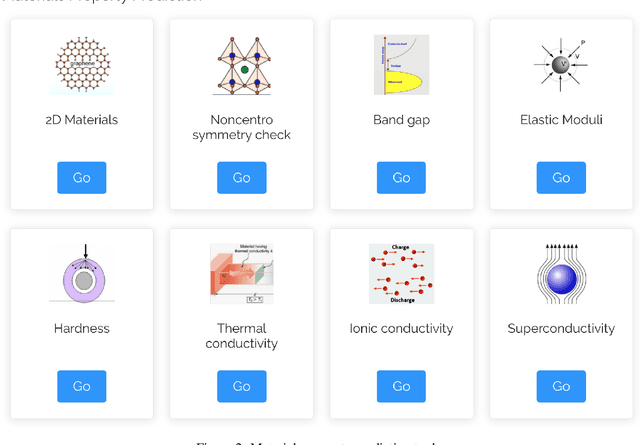
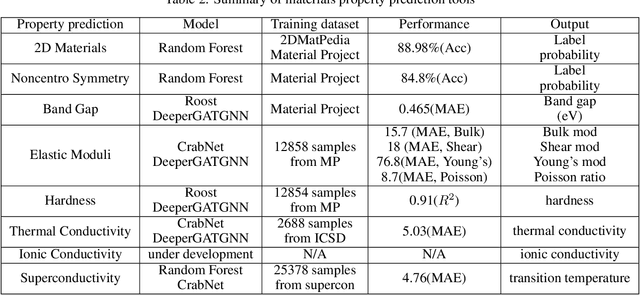
Abstract:The availability and easy access of large scale experimental and computational materials data have enabled the emergence of accelerated development of algorithms and models for materials property prediction, structure prediction, and generative design of materials. However, lack of user-friendly materials informatics web servers has severely constrained the wide adoption of such tools in the daily practice of materials screening, tinkering, and design space exploration by materials scientists. Herein we first survey current materials informatics web apps and then propose and develop MaterialsAtlas.org, a web based materials informatics toolbox for materials discovery, which includes a variety of routinely needed tools for exploratory materials discovery, including materials composition and structure check (e.g. for neutrality, electronegativity balance, dynamic stability, Pauling rules), materials property prediction (e.g. band gap, elastic moduli, hardness, thermal conductivity), and search for hypothetical materials. These user-friendly tools can be freely accessed at \url{www.materialsatlas.org}. We argue that such materials informatics apps should be widely developed by the community to speed up the materials discovery processes.
Active learning based generative design for the discovery of wide bandgap materials
Feb 28, 2021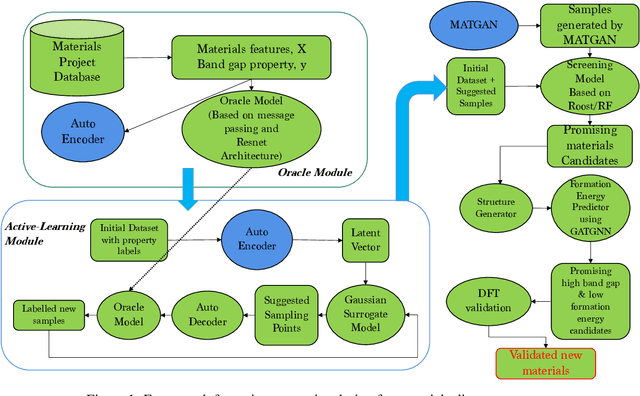

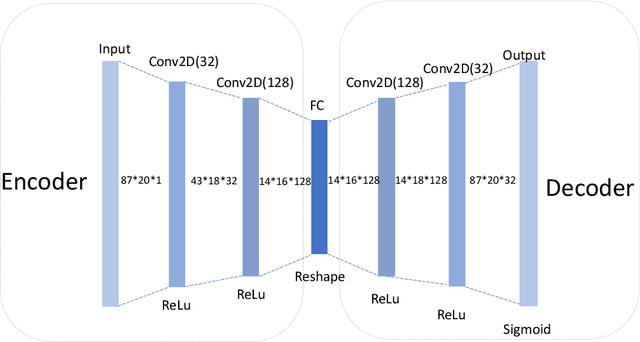
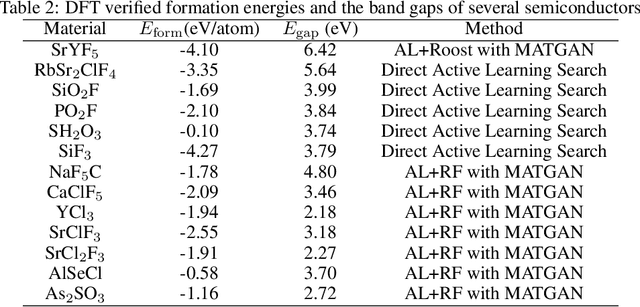
Abstract:Active learning has been increasingly applied to screening functional materials from existing materials databases with desired properties. However, the number of known materials deposited in the popular materials databases such as ICSD and Materials Project is extremely limited and consists of just a tiny portion of the vast chemical design space. Herein we present an active generative inverse design method that combines active learning with a deep variational autoencoder neural network and a generative adversarial deep neural network model to discover new materials with a target property in the whole chemical design space. The application of this method has allowed us to discover new thermodynamically stable materials with high band gap (SrYF$_5$) and semiconductors with specified band gap ranges (SrClF$_3$, CaClF$_5$, YCl$_3$, SrC$_2$F$_3$, AlSCl, As$_2$O$_3$), all of which are verified by the first principle DFT calculations. Our experiments show that while active learning itself may sample chemically infeasible candidates, these samples help to train effective screening models for filtering out materials with desired properties from the hypothetical materials created by the generative model. The experiments show the effectiveness of our active generative inverse design approach.
 Add to Chrome
Add to Chrome Add to Firefox
Add to Firefox Add to Edge
Add to Edge